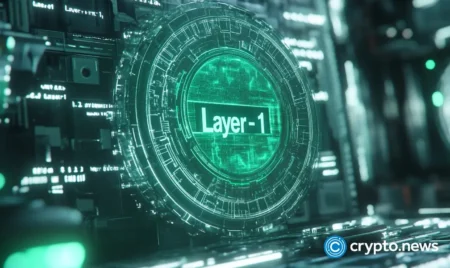Disclosure: The views and opinions expressed here belong solely to the author and do not represent the views and opinions of crypto.news’ editorial.
It’s 2025, and tokenization is no longer just a speculative bet. For nearly a decade, crypto has chased innovation by asking one question repeatedly: “What should we tokenize next?” From stablecoins to gold, real estate, carbon credits, and even U.S. Treasury bonds, blockchain technology now powers a multi-billion-dollar onchain economy.
Last year alone, stablecoins processed a staggering $27.6 trillion, surpassing global payment giants like Visa. Tokenized treasuries climbed past $7 billion, driven by institutions such as BlackRock and Franklin Templeton, while tokenized commodities and private credit surged toward billions more.
Yet despite these impressive milestones, one glaring problem remains unresolved: Crypto is still far too complicated for most people.
The friction problem that’s worth billions
Clever founders won’t be asking what to tokenize; they will be searching for solutions that make tokenization accessible. Despite the flood of onchain assets, interacting with them can still feel like driving with no head-up display. This is not ideal for the majority of users, particularly those in emerging markets, who still face barriers to off-ramping funds that crypto promised to dissolve.
Banking the unbanked got lost in the excitement surrounding PAX Gold (PAXG), Tether (USDT), and USDC (USDC), not to mention the developments with Bitcoin (BTC) and Ethereum (ETH) ETFs. Yes, these things are great for developed economies, but it feels like the original philosophies that brought us here have been diluted.
We can start making our way back, though. Instead of competing with the heavyweights in a saturated domain, the opportunity is in abstracting access with the original goals of financial independence for all embedded.
While not an easy task, there are examples, like Celo’s cREAL in Brazil, featuring mobile-first accessibility, low-cost transactions, and integration with local payment systems.
In other words, the biggest opportunity isn’t creating more digital assets. It’s in making existing assets effortlessly accessible. This means intuitive interfaces, seamless user experiences, and frictionless interactions. It’s about making blockchain disappear behind the scenes, just like PayPal did for online payments, or Robinhood did for stock trading.
Focus on making the onchain world accessible
This invisible finance revolution is already unfolding. Companies like Stripe already simplify stablecoin payments, while Robinhood, Coinbase, and Kraken are actively bringing traditional assets such as stocks, commodities, and soon treasuries onto blockchain platforms.
In the same way that “software ate the world,” interfaces are now eating crypto. These moves don’t replace traditional assets but rather enhance their accessibility and integration into the onchain ecosystem. This also pushes compliance into the front-end.
Projects like Obligate, which enable regulated onchain bond issuance via web3 wallets, show that user experience and legal frameworks can co-exist. Superstate’s USTB token succeeded by pairing robust legal backing with web3-native functionality.
In short, even regulated assets need to feel native to web3. The interface is now the bridge between TradFi-grade compliance and DeFi-grade composability.
Why emerging markets might leapfrog the West
Interestingly, the most interface-driven innovation might not come from Silicon Valley, but from Lagos, São Paulo, and Jakarta.
Emerging markets are rapidly tokenizing sovereign debt, agricultural yields, and localized financial products, not as experiments but as viable alternatives to weak financial infrastructure. The leapfrog effect is real, and the interfaces enabling it are being built quickly, often with a mobile-first approach, a focus on privacy, and a design that is compliant by default.
Building the Robinhood of Brazil or the Zapper of Kenya is a better bet than competing with BlackRock. Even U.S. regulators are beginning to understand this shift.
The GENIUS Act, a stablecoin bill caught between bipartisan ambition and presidential drama, is a rare attempt to regulate not just the assets but also the rails users interact with: disclosure layers, redemption flows, and custodial practices. Public discourse has focused more on Trump’s memecoin circus than on the real issues it addresses: interface-level risk, systemic access, and how trust is mediated onchain.
In Singapore and the UAE, sandboxed environments prioritize user protections through auditable, accessible frontend requirements, not just backend custody policies.
In the European Union, while progress is positive, it feels a little slower. Europe is quietly advancing with the MiCA framework, now in force, requiring wallet-level safeguards like KYC and redemption guarantees.
France’s AMF has led the way in supervising tokenized securities pilots, while Germany’s eWpG law allows regulated issuance of fully digital securities without paper intermediaries.
The next layer of abstraction: Invisible finance
That friction is the opportunity. And founders are starting to realize it. Many of the most successful products, from OpenEden’s hybrid gold-treasury tokens to Maple’s Syrup interface for private credit, aren’t issuing new primitives. They’re building tools that let people use them.
It’s tempting to chase the next token or replicate a successful treasury wrapper. Tokens and treasuries will continue to grow in importance, but that game is already being won by trillion-dollar incumbents. In practice, assets and access co-evolve. For example, real-world assets need new interfaces, but also new legal, custodian, and liquidity solutions.
In other words, RWAs are only as powerful as the tools people have to use them. So the real frontier is not in the asset, it’s in the access.
Great interfaces where crypto becomes invisible are what will onboard the next billion. Gold tokens you can spend at checkout. Credit vaults that are built into DAO dashboards. Tokenized IP embedded into AI-driven remix tools.
These are all possible today, but most still require jumping through too many hoops. So yes, chasing tokens was yesterday’s game. Interfaces are what will determine trust, liquidity, and adoption. Long live the interface.
Read the full article here










